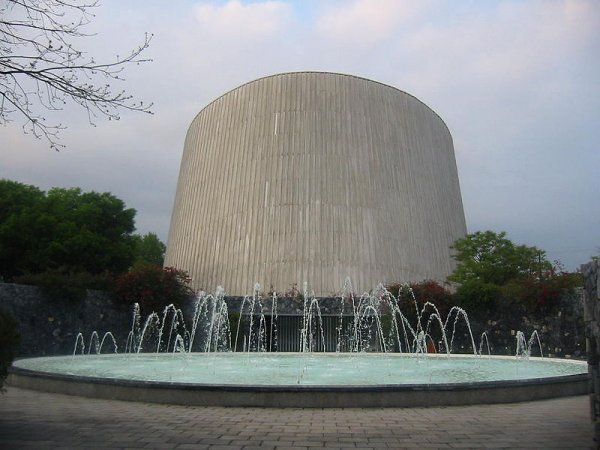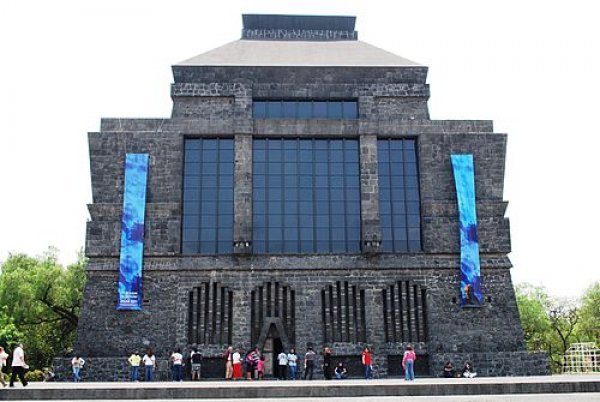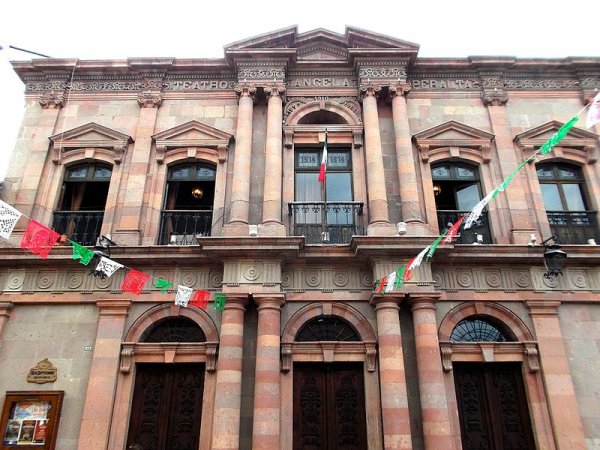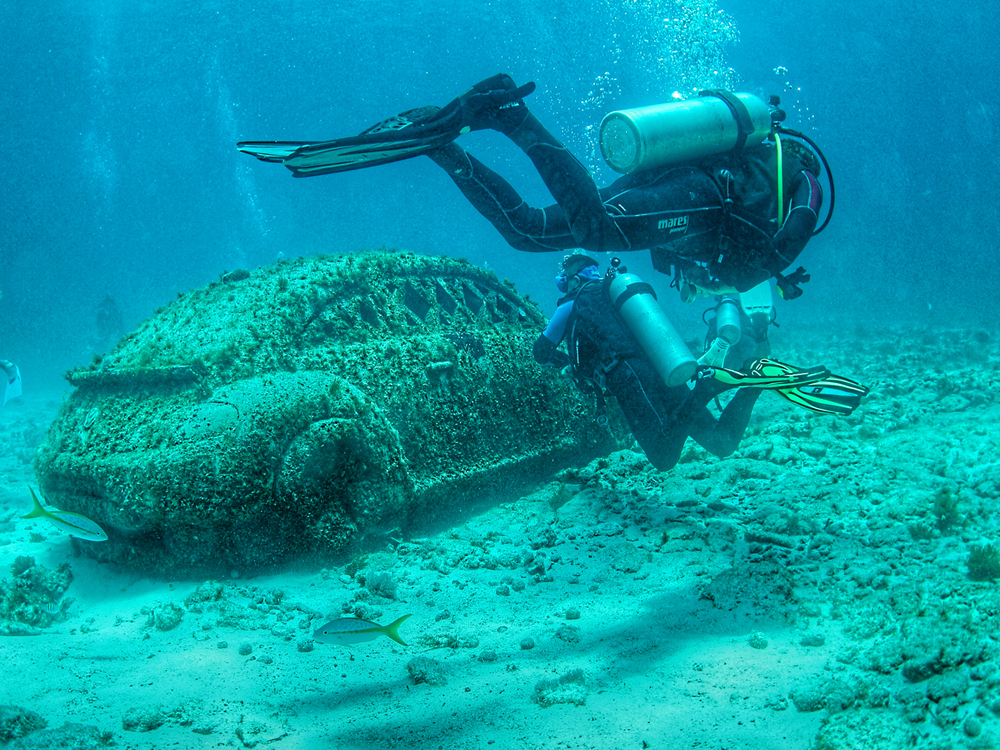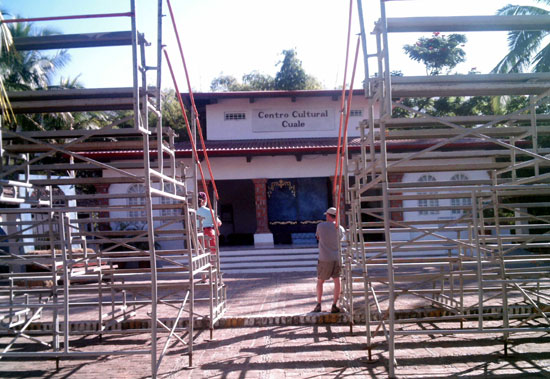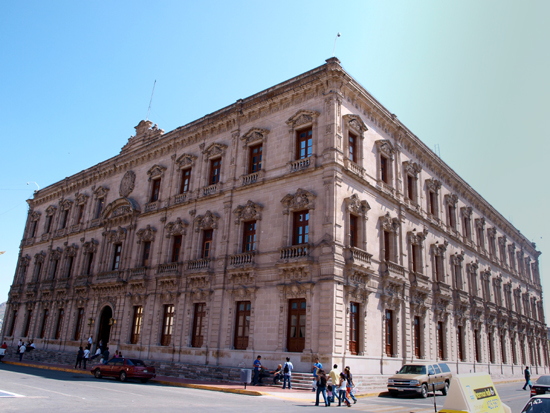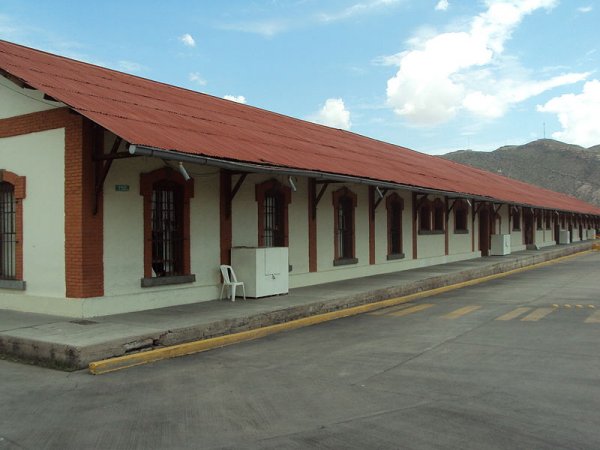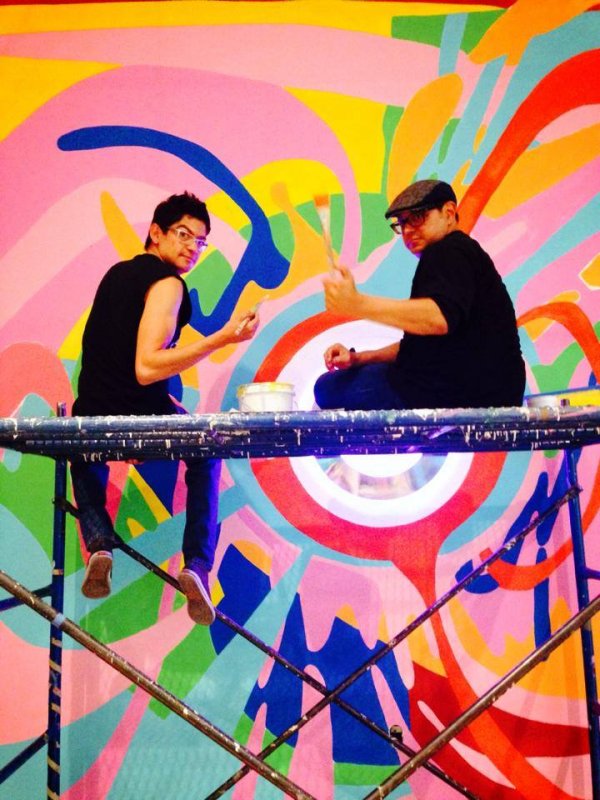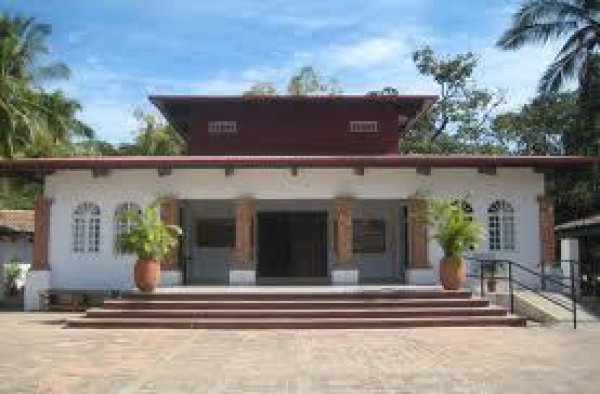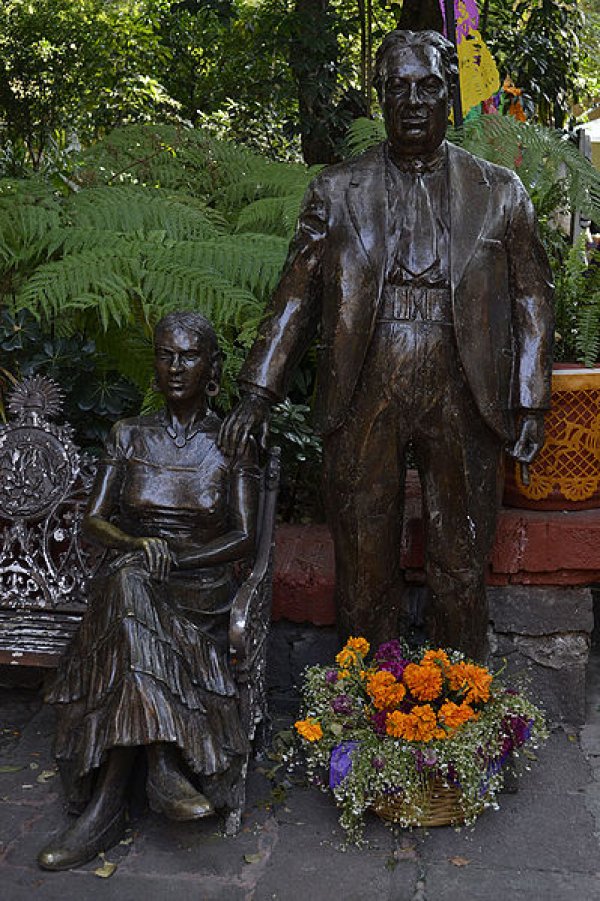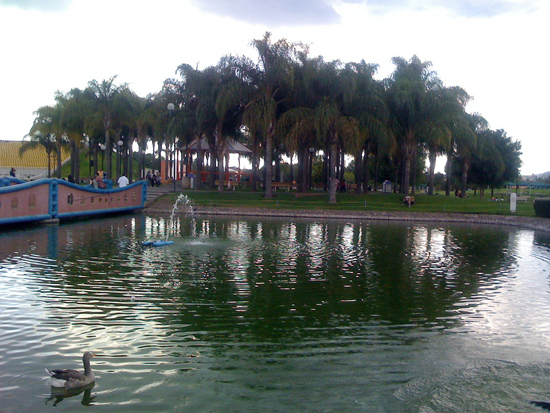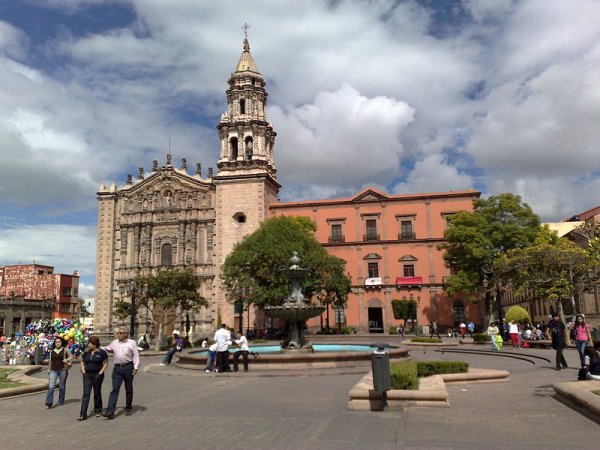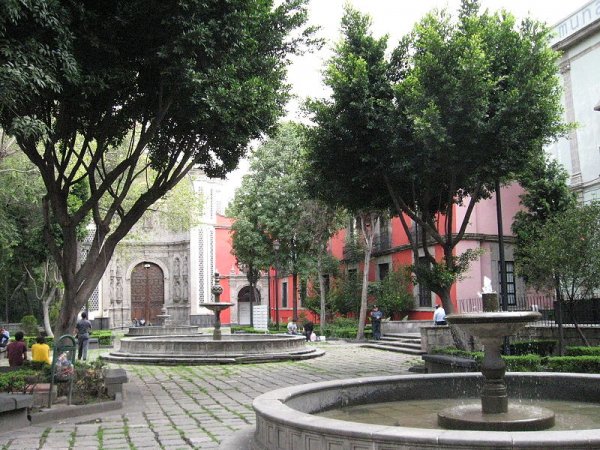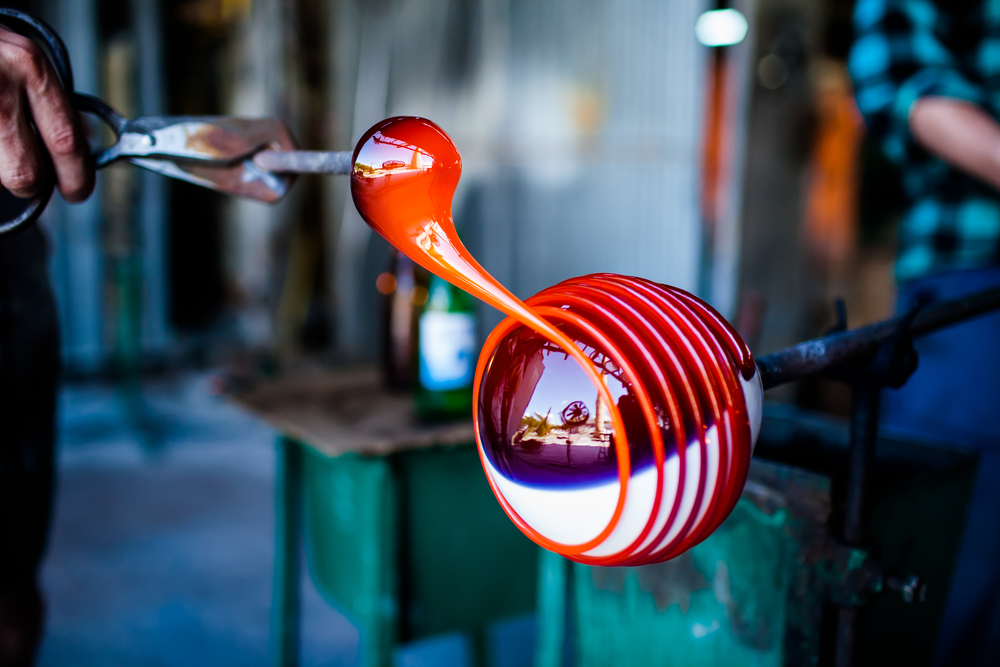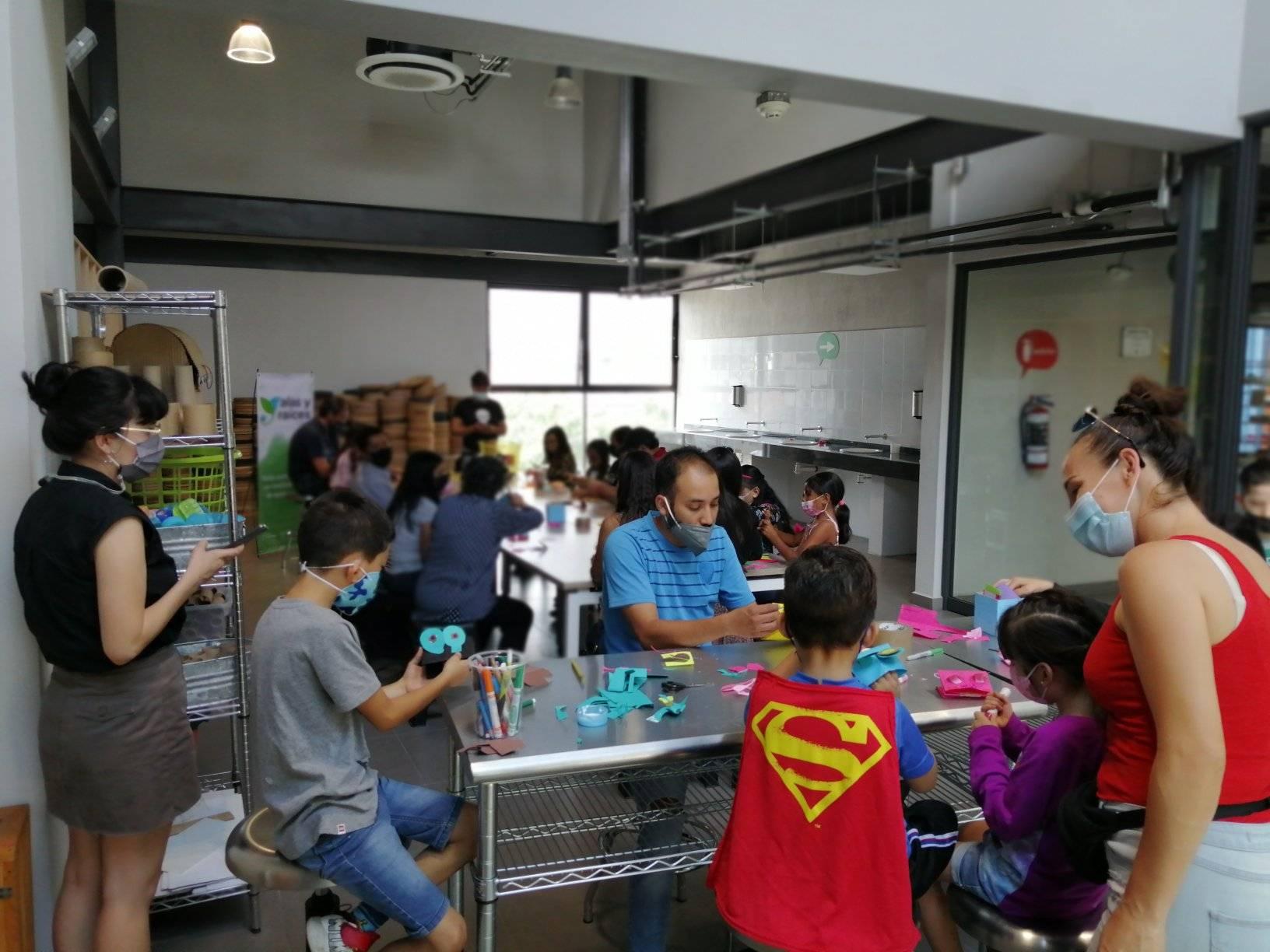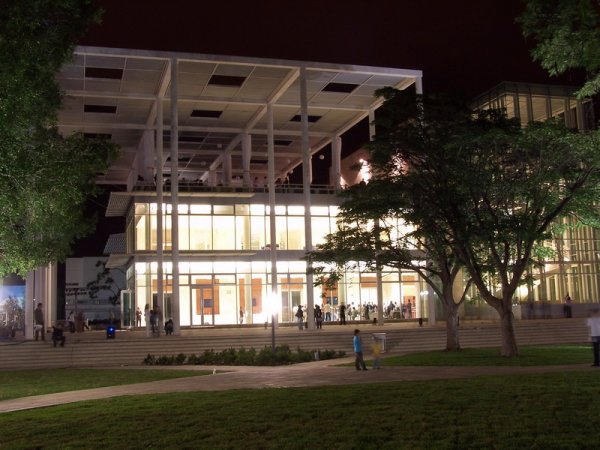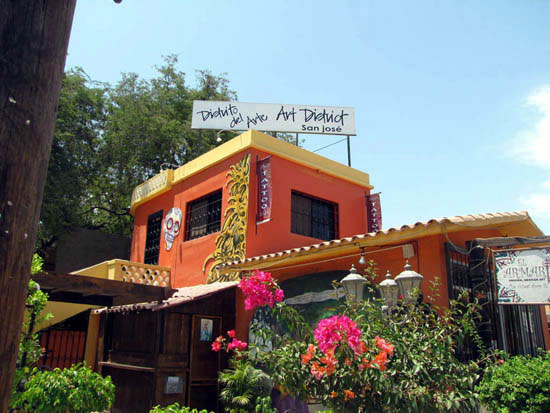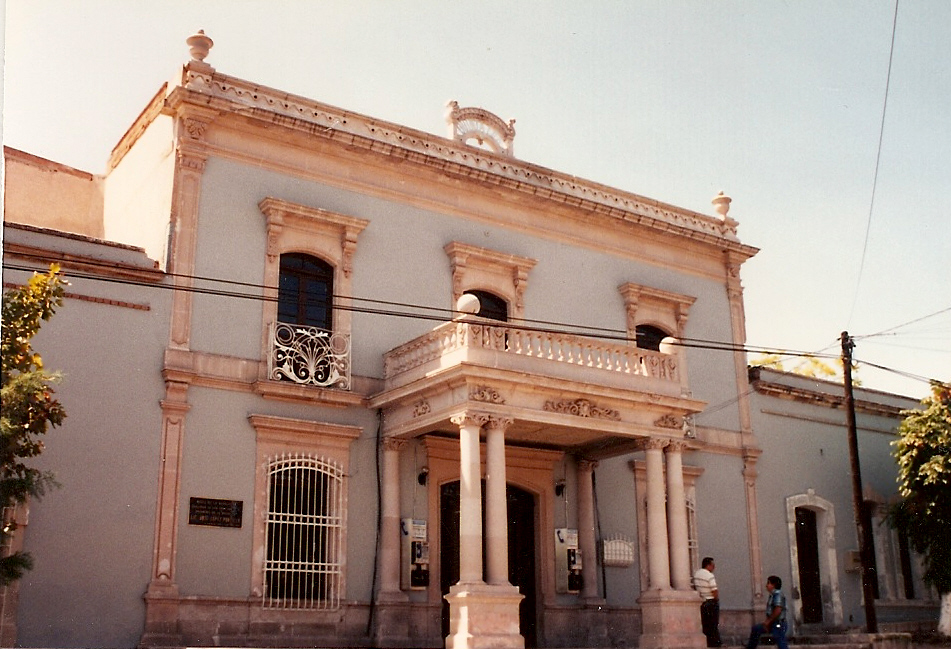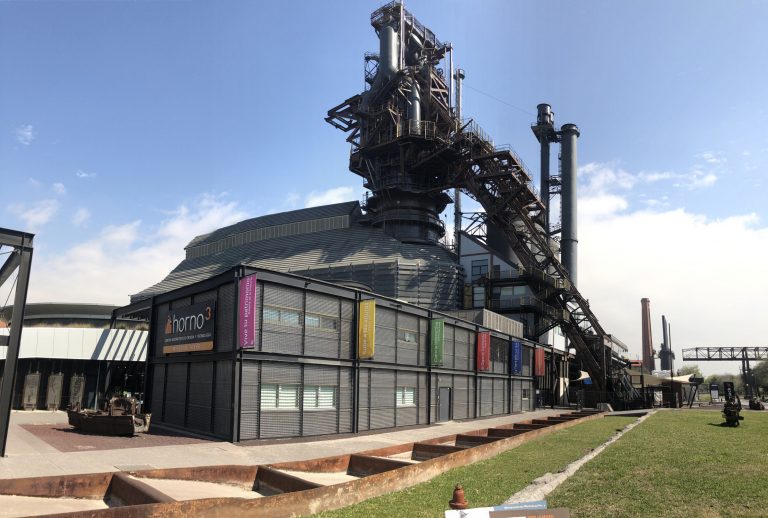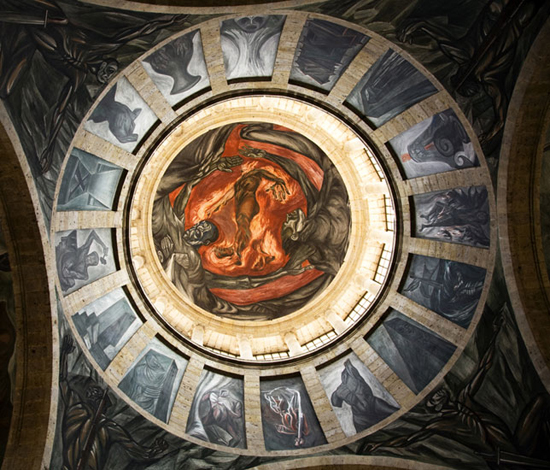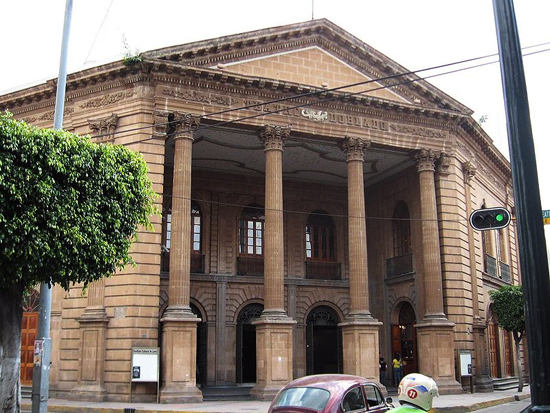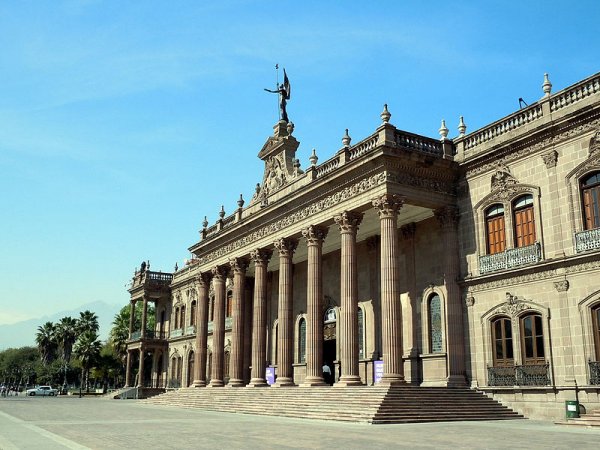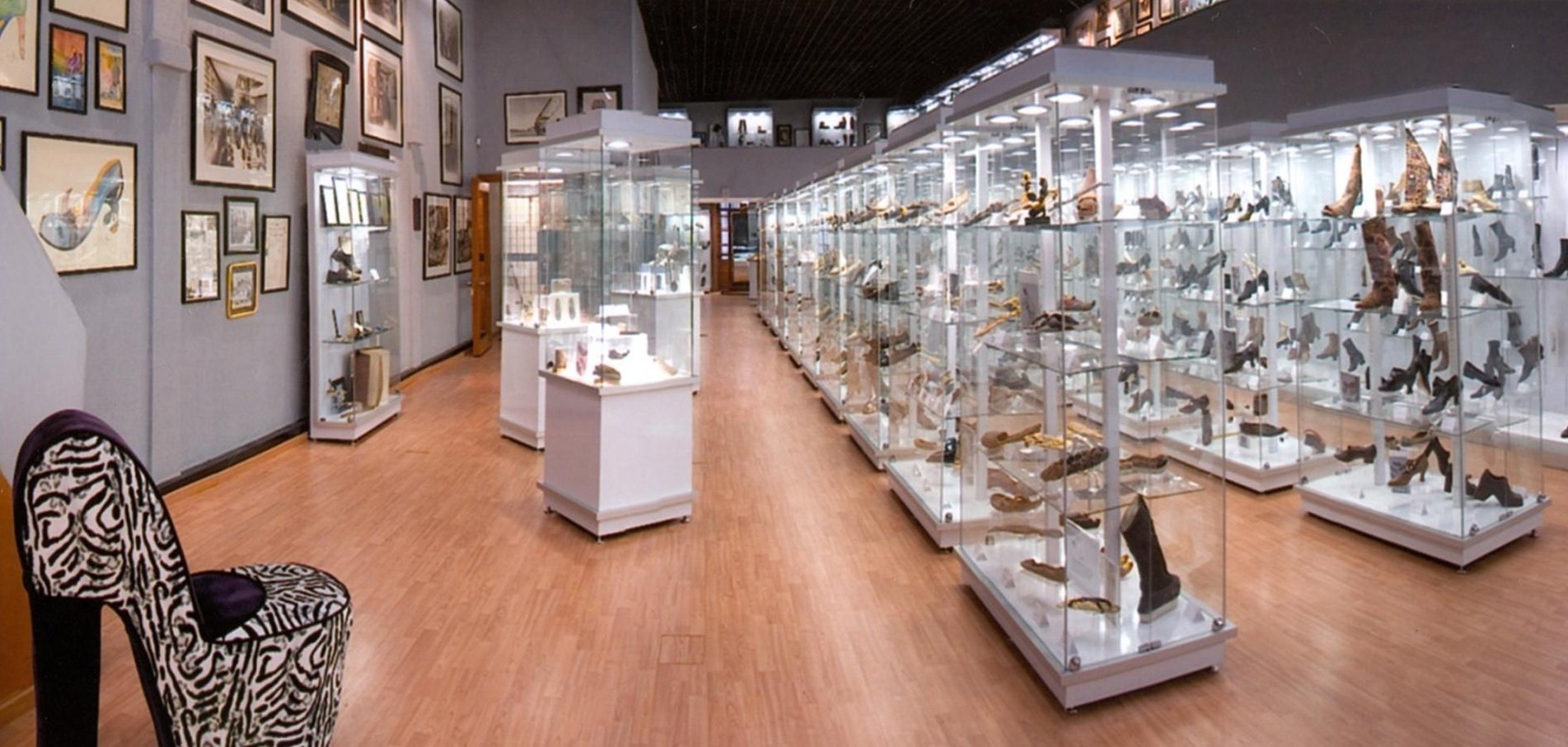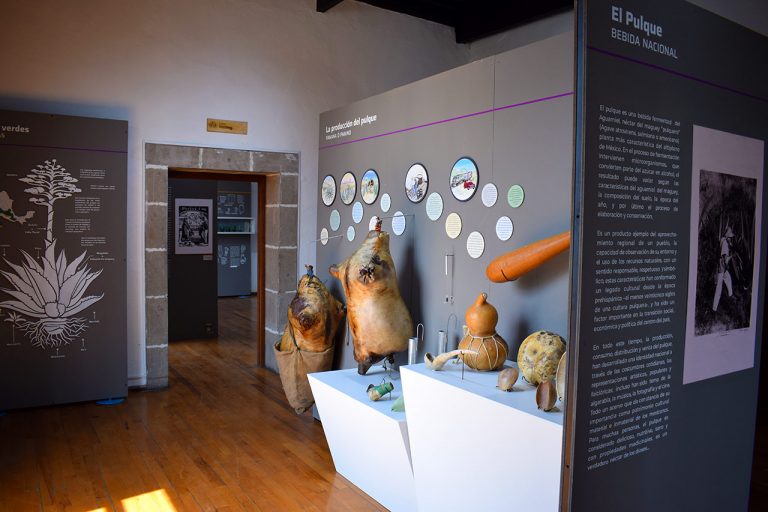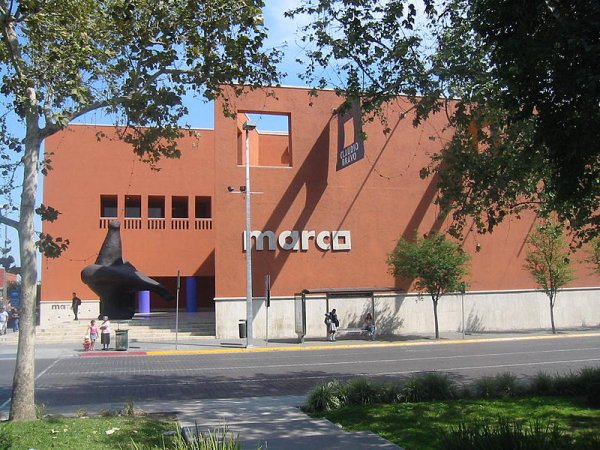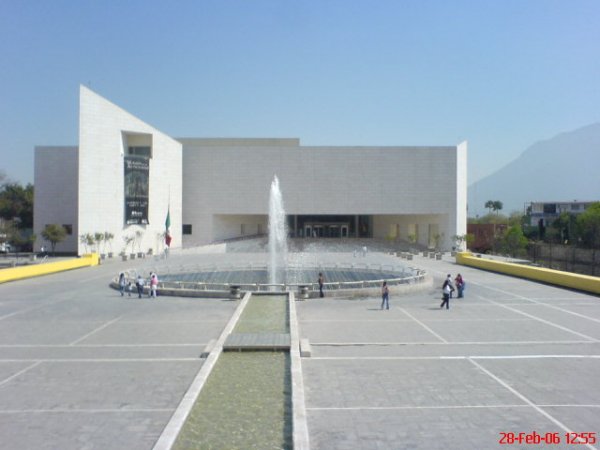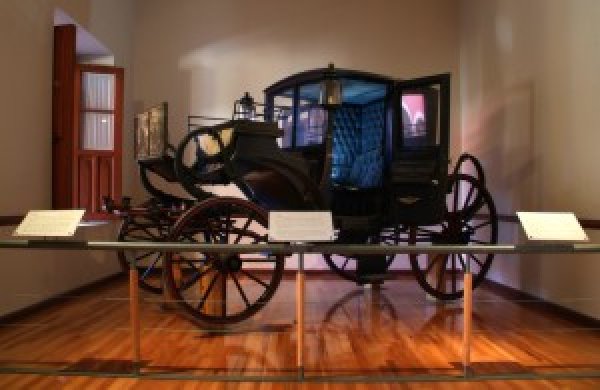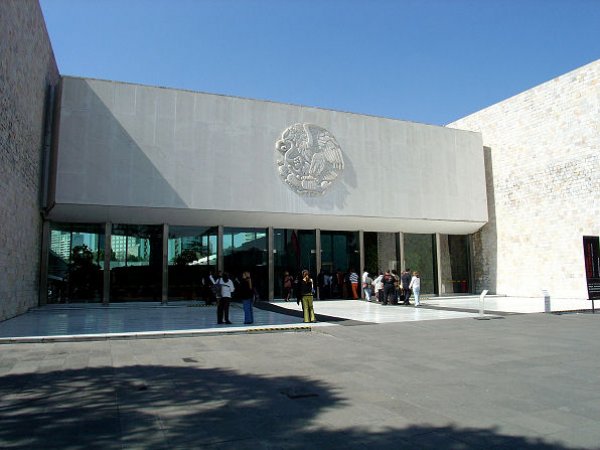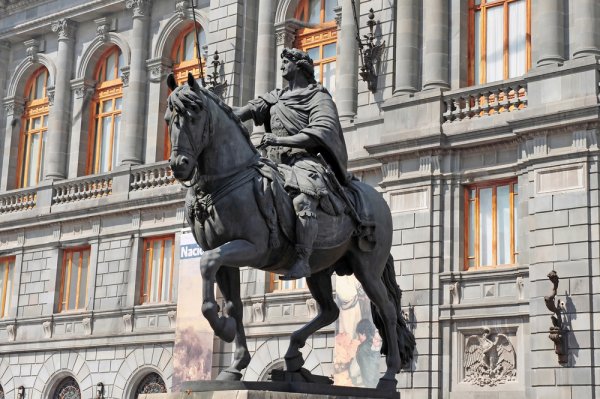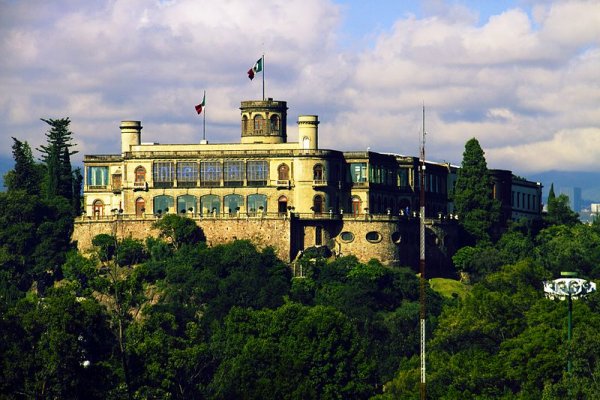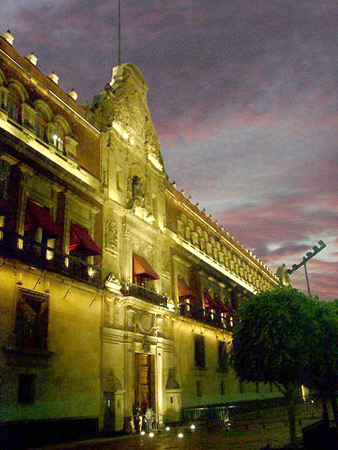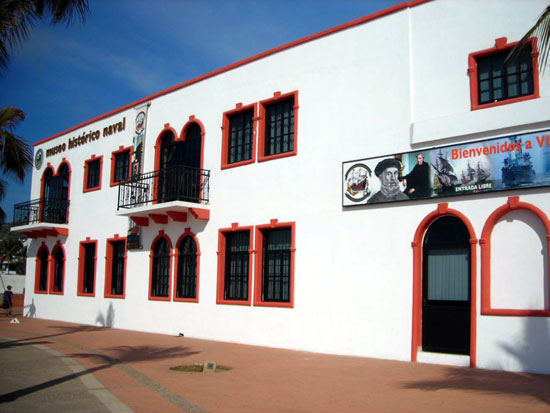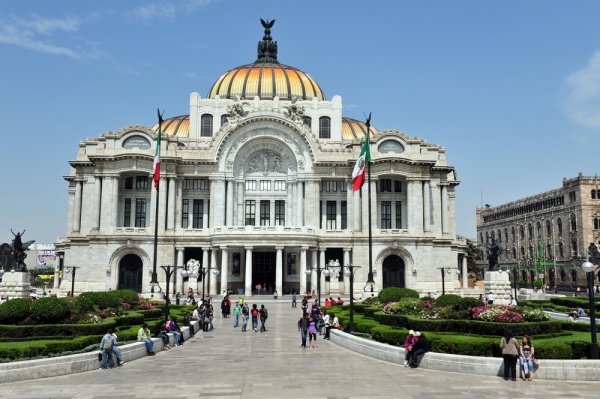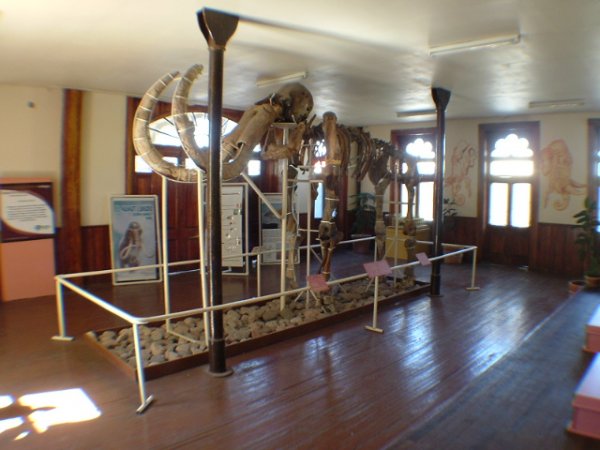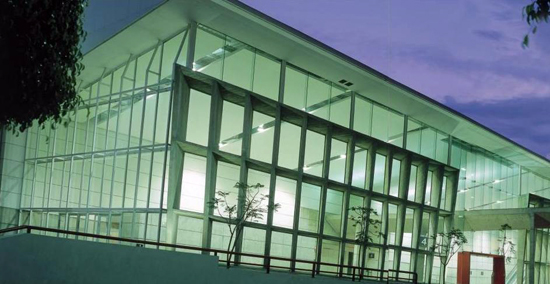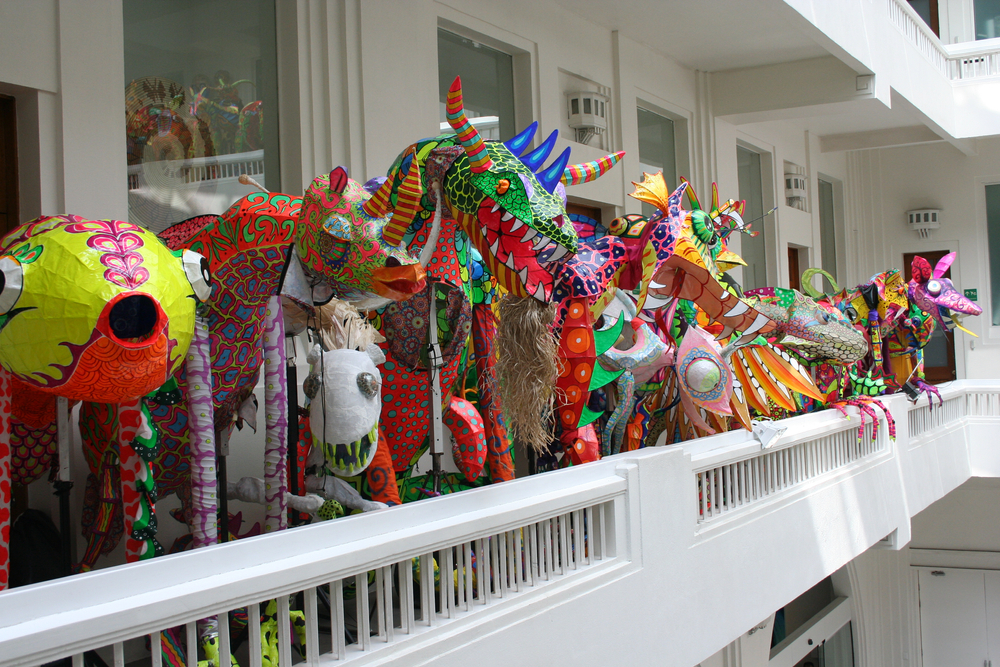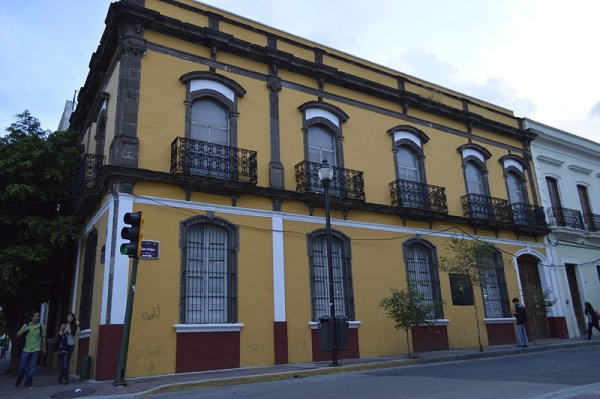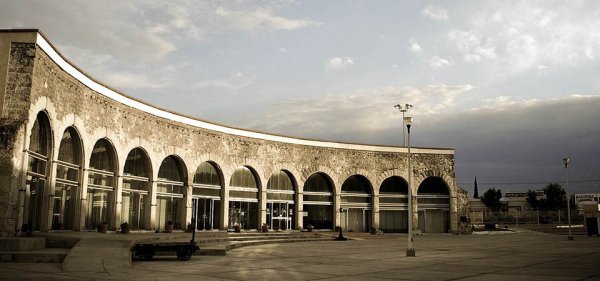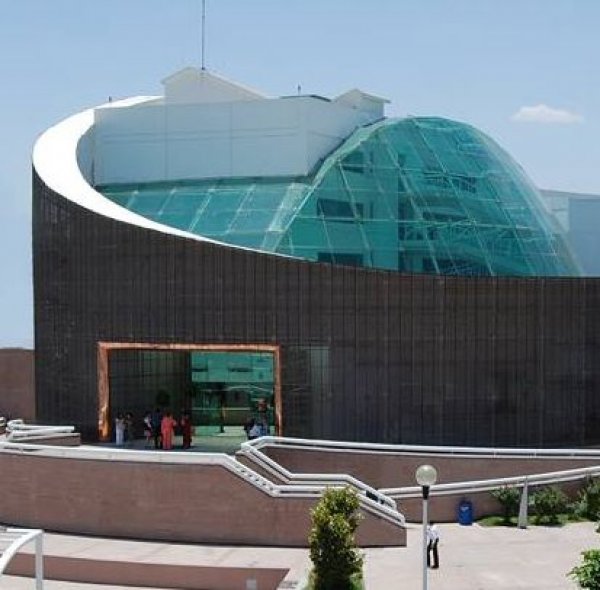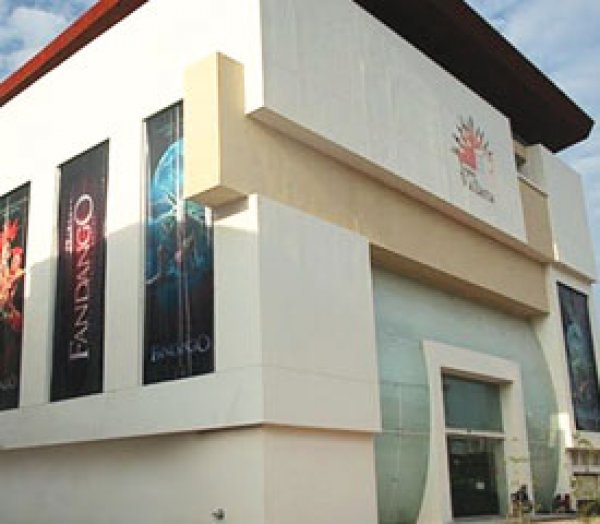Points of Interest
Alfa Planetarium
Planetario Alfa 1000 Garza Sada Avenue
Carrizalejo, Monterrey, Mexico
The many attractions and activities at the Alfa Planetarium make it an excellent place for a family to spend the day. It boasts a museum with an aquarium, an interactive science exhibit, and a large collection of Mexican artifacts as well as an IMAX theater. The complex's Universe Pavilion holds a giant stained-glass window depicting the universe, made by Oaxaca native Rufino Tamayo. Hours of operation are from 2:30 to 8 p.m., Monday through Friday and 11:30 a.m. to 8 p.m. Saturday and Sunday. On weekends, events and demonstrations occur every hour between noon and 8 p.m. Check the website for the current IMAX schedule and science demonstrations.
Anahuacalli Museum
Museo Anahuacalli Museo 150 San Pablo Tepetlapa
Mexico City 04100, Mexico
Diego Rivera may be renowned throughout the world for his murals, but he was also a major collector of Mexican archaeological treasures. This museum, designed and financed by Rivera and built of volcanic stone in a pyramidal style reminiscent of a Teotihuacan temple, holds nearly 60,000 pre-Hispanic artifacts acquired by the artist throughout his life. Anahuacalli means "the house of Mexico," and Rivera intended the museum as a showcase for the country's origins as a non-European culture.
Angela Peralta Theatre
Avenida Miguel Alemán #203
Mazatlan, Sinaloa 82000, Mexico
Originally built around 1870, this theater is the most prominent cultural center in town, which hosts theater, music, opera, and dance performances. The theater was completely refurbished in 1880 into a luxurious, comfortable, and elegant building with 15 colored stages. In 1883, renowned Mexican soprano Angela Peralta arrived in Mazatlan to perform at the theater, but she died of yellow fever contracted during her boat journey. In honor of the diva, the theater was renamed after her. From the middle of the 20th century, the theater fell into ruin, with the final blow coming from Hurricane Olivia. Extensive restoration work followed, and the theater is presently a state-of-the-art facility that showcases art performances of high value.
Bishop's Palace
Palacio del Obispado Rafael José Vergel Col. Obispado
Monterrey, Mexico
Called the Palacio del Obispado colloquially, this attraction's official name is really the Museo de Historia Regional de Nuevo León (Nuevo León Regional History Museum). It was converted to a museum in 1956 and depicts the history of the state of Nuevo León. Monterrey's government built the palace on el Cerro del Obispado (Bishopric Hill) in the late 18th century as a retirement home for an important bishop, Rafael José de Verger, who convinced the monarchy to move the bishop's office to Monterrey. During the Mexican-American War and other wars, the palace served as a fort. The building is now the best example of colonial architecture left in the city. Hours of operation are 10 a.m. to 7 p.m., Tuesday through Sunday (the museum is free on Sunday). The museum is closed Mondays.
Cancun Underwater Museum
Museo Subacuático de Arte, or MUSA Km 18 Kukulcán Boulevard, Hotel Zone
77500 Cancún, Mexico
Scuba divers will enjoy Cancun Underwater Museum, also called MUSA, though there are other ways to see the underwater sculptures. About 500 sculptures were created by British sculptor Jason deCaires Taylor and five Mexican artists, and each sculpture or group of sculptures has a different meaning and name that depicts a specific theme. MUSA has two galleries, the Salon Manchones and Salon Nizuc. Salon Manchones is best for divers, with sculptures sitting between 8 to 10 meters (26 and 33 feet), while Salon Nizuc is best for snorkeling, with sculptures sitting at 2 to 4 m (6.5 to 13 ft). The sculptures create an artificial reef for local sea life as well. You can snorkel here though the views will be from above only, Glass bottom boat tours are offered as well.
Centro Cultural Vallartense
Vallartan Cultural Center Isla Cuale, East End
Puerto Vallarta, Mexico
During the day, the Centro Cultural, housed in an informal group of open-air buildings, offers inexpensive or free art, music, theater, and folkloric dance classes to both locals and visitors. In the evening, it hosts a variety of theater, dance, and music performances, as well as art openings, fund-raising events, and other presentations.
Chihuahua City Theater
Teatro de la Ciudad de Chihuahua Manuel Ojinaga Calle Jose Maria Morelos 106
Centro Chihuahua, Mexico
This theater occupies an extravagant former movie palace, Cine Colonial, which the city acquired in 2000 and converted to a space for live performances. The facade of the 882-seat theater, which opened in 1947, features a colorful 6-meter-tall (20-foot-tall) recessed art deco mural over the main entrance. The venue maintains a regular program of shows by both local and touring music, dance, and theater groups. Presentations range from Broadway musicals to folklore extravaganzas to concerts by popular Mexican and Latin American singers and musicians.
Chihuahua Government Palace
Palacio de Gobierno Plaza de Armas Centro Juarez
Chihuahua, Mexico
Built between 1882 and 1892 with ocher-colored stone from local quarries, this grand neoclassical style building is the seat of the government of the state of Chihuahua. It was severely damaged by a fire in 1921, but fully restored six years later, at which time a third floor was added. The ground floor corridors feature a set of murals painted in 1961 by Mexican artist Aaron Piña Mora Hidalgo that depicts the history of the state of Chihuahua. The eternal flame at the Altar de la Patria (Altar of the Fatherland) in the central patio marks the spot where a Spanish firing squad executed Father Miguel Hidalgo, leader of the Mexican War of Independence, in 1811. Also located here is the Museo Galería de Armas (Gallery of Arms Museum), with weaponry, uniforms, and other items from the war.
Chihuahua Music Conservatory
Conservatorio de Música de Chihuahua Manuel Doblado 4501
Chihuahua, Mexico
Founded in 1997, the conservatory is located in a former railroad station. It offers training in 13 music disciplines. The school sponsors a symphony orchestra, adult choir, children's choir, chamber music groups, and a Latin American music group.
ChocoMuseo
Josefa Ortiz de Domínguez 128,
48300 Centro Puerto Vallarta, Mexico
Though your whole time in Puerto Vallarta may prove to be a sweet escape, a visit to this museum will surely offer a delicious diversion. The whole family will learn about the history of chocolate in Mexico, the place where it originated thousands of years ago. Visitors can watch the sweets being made in the production area or choose among several experiences and workshops. These include making filled chocolates or truffles or a three-hour workshop resulting in a chocolate version of the traditional Mexican sauce, mole. There is even a short workshop geared toward the youngest visitors or for parents on a tight schedule. The on-site museum is all about chocolate too, from its history to the production process.
City Museum
Museo de la Ciudad Independencia 684
Guadalajara, Mexico
Located in an 18th-century house that used to be part of the Capuchin Convent, this museum boasts a large collection of historic artifacts and photographs documenting Guadalajara's history. The eight rooms proceed in chronological order, covering the period from just before the city's founding in the 1500s to the present. Displays, which include rare Spanish armaments and equestrian gear, chronicle day-to-day life in different eras.
Contemporary Art Station Gallery
Aldama 1002
Centro Chihuahua, Mexico
Founded in 2001 by a group of working artists, this gallery, generally referred to as Leace, is dedicated to exhibiting the works of contemporary Mexican and world artists. The gallery focuses on emerging talent, with works by artists from throughout Mexico as well as Chile, Peru, the United States, Canada, and Japan. Gallery artists have shown their work in major museums and institutions worldwide.
Cuale Cultural Center
Centro Cultural Cuale La Isla de Rio Cuale South End
48380 Puerto Vallarta, Mexico
This small museum run jointly by the Mexican government and a group of local volunteers features a three-room collection of pre-Columbian ceramics excavated in the surrounding state of Jalisco, as well as the adjoining states of Nayarit and Colima. It includes some especially attractive female fertility sculptures and some charming representations of Colima's dogs.
Diego Rivera House of Culture
Casa De La Cultura Diego Rivera Portal Delicias Centro
León, Mexico
This 19th-century home with an 18th-century stone facade houses the Cultural Institute of León (Instituto Cultural de León). Located at Founders Plaza, the home is named for Guanajuato's most famous artist, Diego Rivera. Inside are the works of local artist Jesus Gallardo along with various other art and cultural exhibits. The Culture House also offers instructional courses in a variety of artistic mediums including dance.
Explora Science Center
Centro de Ciencias Explora Francisco Villa 202 La Martinica León
León, Mexico
Explora, the interactive science center and 9,500-square-meter park, entertains children and adults alike with permanent and visiting exhibits. The center has four large halls: Man, Water, Communication, and Movement, as well as an IMAX theater and workshops to explore. Several steam locomotives are on display. Open Tuesday through Friday.
Former Carmen Convent
Ex Convento del Carmen 638 Juárez Avenue
Guadalajara, Mexico
This former convent, which was completed in 1758, became a cultural center and museum after the building was restored in the 1990s. The landmark building hosts a wide range of events including theatrical and dance performances, classical and Mexican music concerts, lectures, and art exhibitions. The center courtyard holds a quarry fountain, a bronze bust of Mexican composer José Rolón, and a statue of Roberto Cuéllar García, a Catholic priest who founded an orphanage and school for impoverished children known as the Ciudad de los Niños (City of Children). The site also houses a contemporary sculpture by celebrated Mexican artist and Guadalajara native Alejandro Colunga Marín.
Franz Mayer Museum
Museo Franz Mayer Hidalgo 45 Centro Histórico
06300 Mexico City, Mexico
In 1981, the Public Works Ministry allowed the Franz Mayer Trust to install a museum in the building to house the collection of Franz Mayer, a wealthy German financier. Drastic alterations and modifications were made and, in 1986, the Franz Mayer Museum was opened to the public. The museum houses a fine collection of decorative arts, including silverwork, ceramics, furniture, textiles, sculptures, paintings, feather art, lacquer, ivory, tortoiseshell, glass, and enamel. The museum also holds temporary exhibitions of design and photography and houses a library of rare books.
Glass Museum
Museo del Vidrio Magallanes 517, esq con Zaragoza Colonia Treviño
Monterrey, Mexico
Monterrey's Glass Museum showcases the history of the Mexican glass industry, starting with its European origins in the 16th century. The museum's first two floors house the permanent collection, and the third (el ático) houses special exhibitions and includes a collection of contemporary Mexican glass art. The museum building itself is an important part of glass history—originally it served as the offices of Vidriera Monterrey S.A. (now Vitro), Mexico's first industrial glass company. In addition to examples of ancient and modern glass, visitors get an interesting history lesson (for instance, all glass imported from Europe to Mexico in the 18th century came on a ship called El Dragón). The museum offers tours in Spanish and English, but you must call ahead. On Sundays entrance is free. Normal business hours are 10 a.m. to 7 p.m., Tuesday through Sunday. The museum is closed Mondays.
Globo Children’s Museum of Guadalajara
Corner of Av. 5 de Febrero and Calle Analco
Las Conchas, 44460 Guadalajara, Mexico
Globo Children’s Museum of Guadalajara opened in the city’s Las Conchas neighborhood in 2000. Spread across two floors, it offers a variety of interactive exhibits, activities, and workshops geared toward kids. Visitors have fun while learning as they use microscopes, make crafts, play games, watch films, build projects, and more.
Guanajuato Cultural Forum
El Forum Cultural Guanajuato Corner of Adolfo Lopez Mateos and Francisco Villa Col. Oriental Boulevards
León, Mexico
The Guanajuato Cultural Forum (El Forum Cultural Guanajuato) is a León conglomerate dedicated to opera, musical theater, and dance. Programming includes open-air performances and concerts. Within the space are the Central State Library Wigberto Jiménez Moreno, Museum of Art and History of Guanajuato, Academic Unit for Culture, and Arts of León Theater. El Forum is also the location of the annual León Fair, the Science Center, Explora Park, and the Soccer Stadium.
Historic Art District of San José del Cabo
San José del Cabo, Mexico
Both locals and visitors delight in the burgeoning art district in the historic area of San José del Cabo. Old adobe buildings housing several galleries line the main streets of the city's historic district, V. Guerrero and A. Obregon. These galleries feature unique works by local, Mexican, and international artists. Each Thursday from November through May the district hosts a nighttime art walk from 5pm to 9pm, during which guests can sip wine and view fabulous fine art. Galleries include Amber Art, Arte Julian Garcia, Barrio Latino, Casa Don Pablo, Galeria De Ida Victoria, La Dolce Galeria, Old Town Gallery, Pez Gordo, and others.
Historical Museum of the Revolution
3010 Calle Décima
Colonia Santa Rosa, Chihuahua, Mexico
Also known as the Francisco Villa Museum, this museum is housed inside the former home of Mexican revolutionary Fransico “Pancho” Villa. A bandit turned general, Villa and his family moved into the home soon after the country gained its independence and lived there until his assassination in 1923. Among Villa’s personal belongings at the museum are pistols, saddles, rifles, and letters as well as the bullet-ridden car he was killed in. There are several theories regarding his death, including the idea that his plans to pursue a political career caused Mexican President Alvaro Obregon to order his assassination.
Horno3 Steel Museum
Museo del Acero Horno3 Avenida Fundidora y Adolfo Prieto, Parque Fundidora
Monterrey, Mexico
The Horno3 mission is to bring new generations closer to science and technology, celebrate Mexico’s industrial past, and offer new experiences of education, coexistence, and recreation for everyone. From 1900 to the present, find fascinating details, historical videos, testimonies from former industry workers, ancient artifacts, and much more. The Show del Horno takes place in the old Casa de Vaciados, the heart of the foundry. Through steam, smoke, real fire and sparks, live a unique and unforgettable experience. Dare to go up to the panoramic cabins of the Paseo por la Cima. It's an adventure from start to finish! During a slow trip, these “open” cabins will allow you to make closer contact with the enormous steel structure and discover a spectacular panoramic view of Monterrey, as you ascend the 40 meters (131 feet) of the journey.
– Information provided by Museo del Acero Horno3
Instituto Científico y Literario
Scientific and Literary Institute Escorza and Venustianza Carranza
Centro Chihuahua, Mexico
Between 1937 and 1939, Carreon Najera, an artist from the neighboring state of Durango, painted a series of murals in the main corridors depicting three champions of humanism-Thales of Miletus, Leonardo de Vinci and Santiago Ramón y Cajal-placed in a panorama of Mexican history beginning in pre-Columbian times.
José Clemente Orozco Workshop Museum
Museo Taller José Clemente Orozco Aurelio Aceves 27 Arcos Vallarta
Guadalajara, Mexico
Built in 1945, this was the home and studio of celebrated artist José Clemente Orozco, whose murals adorn many of Guadalajara's most important public buildings. After his death in 1951, Orozco's heirs donated the house to the city. In addition to the artist's furniture and personal belongings, the museum features rotating exhibitions of his paintings and lithographs, as well as photographs of Orozco and his murals.
Manuel Doblado Theater
Teatro Manuel Doblado Calle Pedro Moreno 202
León, Mexico
This neoclassical theater within a French-influenced structure features well-known plays and hosts art exhibitions. Originally inaugurated in 1880, the theater features horseshoe-shaped balconies and a glass dome over an interior courtyard and fountain. It's named in honor of Manuel Doblado, former military general and governor of the state of Guanajuato. It once served as the campaign office for President Porfirio Diaz's reelection in 1910. It was also a horse stable for revolutionaries, a cinema, and even at one point a public parking lot. The theater experienced a rebirth in 1979, after it was remodeled and re-inaugurated as a cultural and artistic forum.
Manuel Lepe Museum
Museo Manuel Lepe Jacarandas 485 Zona Romantica
48380 Puerto Vallarta, Mexico
The workshop of Puerto Vallarta-born Manuel Lepe Macedo has been turned into a museum by his daughter Marcella. The unschooled artist, who died in 1984, painted in a naïve style using themes based on the landscape, buildings, and people of his native city. In addition to paintings, the museum has miniature ceramic and papier-mâché angels, boats, airplanes, and animals, also painted by the artist, along with jewelry he designed and crafted.
Monterrey Government Palace
Palacio del Gobierno Zaragoza y 5 de Mayo Zona
Centro Monterrey, Mexico
Billed as a "palace for everyone," this neoclassical government building now serves as a free museum dedicated to Nuevo León's political history. Audio tours are available in English and Spanish and can be downloaded from the museum's website in advance. The museum is broken up into four themed rooms. The first three focus on different aspects of Nuevo León's government, laws, and society. The fourth room details the history of the building itself. General Bernardo Reyes commissioned the palace during his tenure as governor, and it stands as a testament to the splendor of Monterrey in the early 20th century. The museum's collection of more than 150 pieces of artwork, documents, photographs and antiques gives visitors a glimpse into another era. Hours of operation are Tuesday through Friday, 10am to 7pm and Saturday and Sunday, 10am to 8pm The museum is closed Monday.
Museo del Calzado
Footwear Museum Calle de Bolívar 27
Centro Histórico, Mexico City, Mexico
This museum bills itself as “the only shoe museum in Mexico and Latin America.” Located inside the famed El Borcegui shoe store, the museum offers six areas devoted to shoes and shoe history. See examples of the first kind of shoe, made simply from straps connecting a sole, along with regional examples of footwear and shoes worn by celebrities and even dogs. Included in the mix are Magic Johnson’s size 14.5 basketball shoes, Neil Armstrong’s lunar boots, and Mexican film diva María Félix’s boots. Dog lovers will appreciate the booties worn by Frida, a rescue dog who helped search for survivors after a 7.1 magnitude Mexican earthquake in 2017. There are Chinese lotus shoes worn by women who bound their feet, a 3rd century Egyptian sandal, and slippers of Queen Elizabeth II.
Museo del Pulque y las Pulquerias
Museum of Pulque and Pulquerias Avenida Hidalgo 107
Centro Histórico, Mexico City, Mexico
This museum serves as a tribute to the ancient Mexican alcoholic beverage, pulque. Made from the fermented sap of agave plants—the source of the country’s more popular drinks of tequila and mezcal—pulque’s history is explored in full at the museum. The Acocote Room gives information about the hand-made process of pulque, the tools, and their importance in history, since pre-Hispanic days until modern times. The Rentoy Room explores past and present pulquerias (taverns serving pulque), and teaches about the false stereotypes of pulque along with traditional sayings and phrases and includes a peculiar collection of traditional pulque jars.
–Information provided by Museo del Pulque y las Pulquerias
Museo INAH
Kilometer 9.5 Kulkulcan Boulevard
Cancún, Mexico
Located on the south side of the Convention Center in the Zona Hotelera, the Museo INAH (or Museo Maya de Cancún) is dedicated to the Mayan history of the Yucatan Peninsula. Deformed skulls, elaborate jewelry, and a host of other artifacts are on display to the general public. The museum is open 9 a.m. until 8 p.m. Tuesday through Friday and 10 a.m. until 7 p.m. Saturday and Sunday.
Museum of Archaeology and Historical City Archives
Justo Sierra 216 Colonia
León, Mexico
The Museum of Archaeology boasts a collection of both historical and scientific artifacts dating to the formation of the city of León, with pieces from the Chupicuaro and Chichimeca cultures. Additionally, there are exhibits featuring relics from the indigenous people of the region. The museum also constructed a display that tracks the development of the mining industry and how it transitioned into a thriving leather goods and shoe hub. It details the significance of these industries and the influences they had on León's society and culture.
Museum of Contemporary Art
Museo de Arte Contemporaneo Zuazua y Jardón S/N
Centro Monterrey, Mexico
The Museum of Contemporary Art, or MARCO, displays some of the best work by contemporary Mexican and Latin American artists on its two exhibit floors. The building, designed by well-known Mexican architect Ricardo Legorreta, is in itself a work of art. The bold shapes and colors create the perfect space for the art it displays. MARCO features about nine artists per year and has no permanent collection, so there is always something new to see. Past exhibits include such famous Mexican artists as Diego Rivera and Frida Kahlo, contemporary artists like Victor Rodriguez and Maria Izquierdo, and themed exhibits like the History of Women and the BMW Art Car Collection. Admission is Mex$60, but entry is free on Wednesdays. Hours are 10am to 6pm Tuesday and Thursday through Sunday, and 10am to 8pm Wednesday. The museum is closed Monday.
Museum of Mexican History
Museo de Historia Mexicana Dr. Coss 445 Sur
Monterrey, Mexico
Situated near the spot explorer Diego de Montemayor founded Monterrey in the 16th century, the Museum of Mexican History reaches outside the city to tell the story of the country from antiquity to the present. Four rooms, or salas, detail the four major periods of Mexico's history: pre-Hispanic, colonial, post-colonial (19th century), and 20th century. The museum also features temporary exhibits on important places and organizations. This is a great place for the kids, since those under 12 get in for free and the museum provides educational materials free of charge. The admission price of Mex$40 also admits visitors to the nearby Museo del Noreste (Museum of the Northeast) on the same day. Hours of operation are Tuesday through Friday, 10am to 7pm and Saturday and Sunday 10am to 8pm The museum is closed Monday.
Museum of Republican Loyalty
Museo de la Lealtad Republicana Juárez 321
Centro Chihuahua, Mexico
This single-story hacienda, also known as Casa Juárez, was built in 1826 and originally served as the home of the government of the state of Chihuahua. For two years during the French invasion, Mexican president Benito Juárez used the building to house the Mexican government-in-exile. The building became a museum in 1972 on the 100th anniversary of Juárez's death.
National Anthropology Museum
Museo Nacional de Antropologia Avenida Paseo de la Reforma, colonia Chapultepec Polanco
11560 Mexico City, Mexico
Inaugurated in 1964, this museum was designed by architect Pedro Ramírez Vázquez and has a closed area of 4.5 hectares (11 acres), which houses more than 10,000 original pieces distributed on two levels. The exhibits include a fine collection of over 10,000 original pieces representing the archaeological, ethnographic, and artistic heritage of Mexico. Notable exhibits include the sculpture of Tláloc (Aztec god of water), a bronze-carved column called the Paraguas, and other architectonic scale models of important archeological sites like the Tlatelolco's flea market, Quetzalcóatl's Pyramid, Palenque and Monte Alban's tombs.
National Art Museum
Museo Nacional de Arte Tacuba 8 El Centro Histórico
06010 Mexico City, Mexico
This museum, constructed in a neoclassical style, was opened in 1982 and houses a fine collection of Mexican art produced between the 16th and 20th centuries. The entrance of the museum is guarded by a statue of Carlos IV, and marble sculptures that were once displayed in the Alameda Central. The museum has 14 galleries whose exhibits trace the evolution of Mexican art from Mesoamerica to the end of the 19th century.
National History Museum
Museo Nacional de Historia Chapultepec Park, Chapultepec Castle
Mexico City, Mexico
Located in Chapultepec Castle, the Museum of National History has 12 rooms that display exhibits representing various stages in Mexican history from the foundation of the Spanish Empire to the Revolution of 1910. The top floor houses a library and dioramic creations of some of the castle's rooms during the reign of Emperor Maximilian I of Mexico (von Habsburg). The museum's collection includes paintings, sculptures, documents, weapons, clothing, household goods, and philatelic and numismatic objects. Notable among the exhibits are the reproduction of the Aztec codices and classic murals by famous artists like Jose Clemente Orozco and David Siqueiros.
National Palace
Palacio Nacional S/N Plaza de la Constitución
06066 Mexico City, Mexico
Built in 1693 for Hernán Cortés, the Palacio Nacional now serves as the official home and office of Mexico's president. Its construction used the foundation of and many of the materials from the palace of Moctezuma II, ruler of the Aztec empire at the time of the Spanish conquest. In addition to government offices, the building houses the Archivo Nacional de México and a small museum dedicated to Benito Juárez and the Congreso de la Unión. The 200-meter-long (650-foot-long) building originally had only two stories, but a third story was added in the 1920s. In the same period, Diego Rivera painted murals in many of the public corridors, including the renowned Epica del Pueblo Mexicano en su Lucha por la Libertad y la Independencia (Epic of the Mexican People in Their Struggle for Freedom and Independence) in which 2,000 years of history are condensed onto a single wall.
Naval History Museum
Zaragoza 4
Centro Puerto Vallarta, Mexico
Opened in 2009, this small museum holds a permanent collection of cartography, documents, images, navigation instruments, weapons, paintings, scale models, uniforms, and objects relating to the history of the Mexican Navy. A small section is devoted solely to the history of Puerto Vallarta and special exhibits by local artists. A popular feature is the second-floor restaurant, where you can eat an inexpensive breakfast or lunch served by Navy personnel while enjoying an extraordinary view over the Malecón and bay.
Old Toy Museum of Mexico
Museo del Juguete Antiguo México Dr. Olvera 15
Mexico City, Mexico
The Museo del Juguete Antiguo México (Old Toy Museum of Mexico) is a four-floor collection of about 60,000 toys. Amassed by collector Roberto Kinoshita, he created many of the display cases from recycled objects, and the collection is a varied and intriguing visual ode to toys. Most toys date from the 19th century through the 1980s, and the majority were popular in Mexico. Though the collection lacks signage or explanatory text, the museum reflects a passion for toys and perhaps childhood itself, and despite occasionally feeling chaotic still reflects a sense of fun. A gift shop sells vintage toys, the sale of which supports the museum. If you visit, ask about the art-focused, rooftop speakeasy, which is only opened when requested and offers expansive views of the neighborhood.
Palace of Fine Arts
Palacio de Bellas Artes Calle Lopez Peralta
06050 Mexico City, Mexico
The Palace of Fine Arts is in a historic building that was once the National Theater. Designed by Italian architect Adamo Boari in 1901, the theater has an exterior of Italian white marble and classic murals. There is a square with gardens and Pegasus statues. The interiors are elegantly designed with art decorations, notable among them a stained glass curtain depicting a volcano and the valley of Mexico. The theater's repertory includes classical music, opera, and dance, notably the Baile Folklórico. Wakes for famous Mexican artists have also been held in the theater. The Palacio also has two museums, the Museo del Palacio de Bellas Artes and the Museo de la Arquitectura.
Paleontology Museum
Museo de Paleontologia Juárez 2605
Chihuahua, Mexico
Housed in a former school building completed in 1909, the museum is dedicated to promoting knowledge of natural history and its relation to man, with particular emphasis on the last ice age and the Columbian mammoth, a species unique to North America. Through the display of fossils, flora, and fauna, the museum offers a journey through the age of reptiles and the early reign of mammals in the Cenozoic Era.
Peter Gray Art Museum
Museo de Arte Peter Gray Avenida Universidad 203, Centro Universitario de la Costa
Puerto Vallarta, Mexico
Opened in 2008, the Museo de Art Peter Gray provides university students with opportunities to learn about all kinds and styles of art, from pencil drawings and etchings to oil painting, water colors, and sculpture. This small museum features art from the 18th century to the present day. The central collection comes from the estate of Peter Gray, an American expatriate who lived in Puerto Vallarta for nearly three decades. Works include paintings by William Hogarth, Carlos Mérida, José Luis Cuevas, Gunther Gerzso, and Max Papart. There are also works by artists from the indigenous Wixáritari, or Huichol, people.
Planetary Science and Technology Center
Anillo Periférico Norte Manuel Gómez Morín 401 Huentitán el Alto
Guadalajara, Mexico
Created by the municipality of Guadalajara in 1982 to promote scientific and technological research education, the science center holds permanent exhibits and telecommunications modules on physics, anatomy, biology, chemistry, and aeronautics, as well as an exhibit of antique cars. In the aeronautics exhibit you can enter the cockpit of a Boeing 707 or F-105 fighter-bomber. A planetarium hosts regular shows and a Newtonian telescope with a 30-centimeter (11-inch) diameter and 254-cm (100-in) focal length.
Poliforum Cultural Center
Centro Cultural Poliforum Corner of Adolfo López Mateos and Francisco Villa boulevards
León, Mexico
The Poliforum Cultural Center is one of the newest major construction projects to arise in León. It is a complex of cultural institutes designed for world-class events. Included in the mix are a public library, art galleries, green areas, a museum, and the Bicentennial Theater, one of the biggest opera houses and theaters in Latin America.
Popular Art Museum
Museo de Arte Popular Calle Revillagigedo 11
Colonia Centro, Mexico City, Mexico
Museo de Arte Popular (MAP) has set itself to be an indisputable reference in Mexican popular art. It is a magnificent showcase of the country’s roots, traditions, and artistic abilities, which seeks to revalue its wealth and the work of nearly eight million people involved in artisanal processes, for the knowledge and enjoyment of current and future generations. When visiting MAP, it is as if you were taking a tour of the different regions of Mexico, possessing their own natural and social environments, customs, traditions and aesthetics. It allows you to discover the close relationship between the work of artisans and artists, with respect to the exuberant biodiversity located in the country. Learn about the manufacture of handcrafted pieces, including textiles, piñatas, alebrijes, pottery, glass, furniture, and more.
– Information provided by Museo de Arte Popular
Popular Arts Museum of Jalisco
Museo de las Artes Populares de Jalisco San Felipe No. 211
Centro Guadalajara, Mexico
With four rooms of permanent exhibits and two for temporary exhibitions, the museum displays paintings, sculptures, and handicrafts made by artists from the state of Jalisco. Most of the items exhibited in temporary installations are for sale, and the museum store sells yet more pieces.
Regional Museum of Guadalajara
Museo Regional de Guadalajara Lice 60 Rotonda de los Jaliscienses Ilustres
Guadalajara, Mexico
Housed in the former Seminario de San José (St. Joseph Seminary), which was built in 1758, this museum features a somewhat eclectic array of exhibits and collections on the history of the Guadalajara area and the state of Jalisco. The ground-floor archaeology section holds a wealth of historic artifacts, including pottery and jewelry found in the Guadalajara area. The highlights are the skeleton of a woolly mammoth and a reproduction of a tumba de tiro (shaft tomb), a burial method used by the pre-Hispanic cultures of western Mexico. A history gallery on the second floor features paintings from the Spanish colonial era and in-depth information about charros, traditional Mexican cowboys.
Round House Chihuahuan Museum of Contemporary Art
Casa Redonda Museo Chihuahuense de Arte Contemporáneo Avenida Colón y Escudero
Chihuahua, Mexico
Opened in 2000, Round House Chihuahuan Museum of Contemporary Art is located in a former roundhouse, or machine and repair shop, of the National Railways of Mexico. It features an unusual mix of contemporary art and railroad memorabilia by artists such as David Alfaro Siqueiros, Fermin Gutierrez, Enrique Altamirano, Humberto Peraza, and Gilberto Aceves Navarro. The highlight of the collection is the bronze portrait of Guadalupe Marin created in 1930 by Mexican sculptor Ignacio Asúnsolo. The outdoor courtyard fronting the building holds a railroad turntable on which sit several restored locomotives.
Seed Center Museum of Science and Technology
Semilla Museo Centro de Ciencia y Tecnología Progreso 1201
Centro Chihuahua, Mexico
Targeted primarily to children, this strikingly designed contemporary facility is intended to stimulate curiosity about scientific knowledge and research. The building includes two main exposition rooms with interactive exhibits, a computer tower with nine training classrooms, a library, and a cyber café.
Vallarta Theater
Teatro Vallarta Uruguay 184 Colonia 5 de Diciembre
Puerto Vallarta, Mexico
Until the completion of this 960-seat theater in 2010, the city had no space suitable to host major dance, drama, and musical performances. Created in the shell of a former movie theater, the facility incorporates the latest technology in lighting, audio, and theater mechanics. The stage measures 25 meters (88 feet) by 9 m (29 ft), with a 42-square-meter (450-square-ft) LED display behind. In addition to visiting and temporary shows, the theater has developed the ongoing presentation Fandango, which translates traditional Mexican dance into a very modern, high-tech performance.
Copyright © 1993—2024 World Trade Press. All rights reserved.

 Mexico
Mexico 